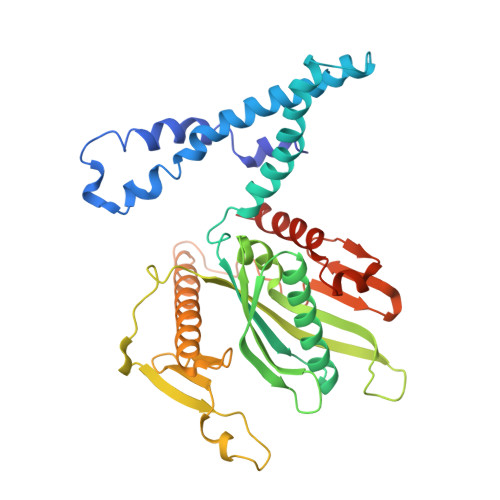Release factors 2 from Escherichia coli and Thermus thermophilus: structural, spectroscopic and microcalorimetric studies.
Zoldak, G., Redecke, L., Svergun, D.I., Konarev, P.V., Voertler, C.S., Dobbek, H., Sedlak, E., Sprinzl, M.(2007) Nucleic Acids Res 35: 1343-1353
- PubMed: 17272297
- DOI: https://doi.org/10.1093/nar/gkl696
- Primary Citation of Related Structures:
2IHR - PubMed Abstract:
Prokaryotic class I release factors (RFs) respond to mRNA stop codons and terminate protein synthesis. They interact with the ribosomal decoding site and the peptidyl-transferase centre bridging these 75 A distant ribosomal centres. For this an elongated RF conformation, with partially unfolded core domains II.III.IV is required, which contrasts the known compact RF crystal structures. The crystal structure of Thermus thermophilus RF2 was determined and compared with solution structure of T. thermophilus and Escherichia coli RF2 by microcalorimetry, circular dichroism spectroscopy and small angle X-ray scattering. The structure of T. thermophilus RF2 in solution at 20 degrees C is predominantly compact like the crystal structure. Thermodynamic analysis point to an initial melting of domain I, which is independent from the melting of the core. The core domains II.III.IV melt cooperatively at the respective physiological temperatures for T. thermophilus and E. coli. Thermodynamic analyses and the X-ray scattering results for T. thermophilus RF2 in solution suggest that the compact conformation of RF2 resembles a physiological state in absence of the ribosome.
Organizational Affiliation:
Department of Biochemistry, P. J. Safárik University Kosice, Slovakia.
















